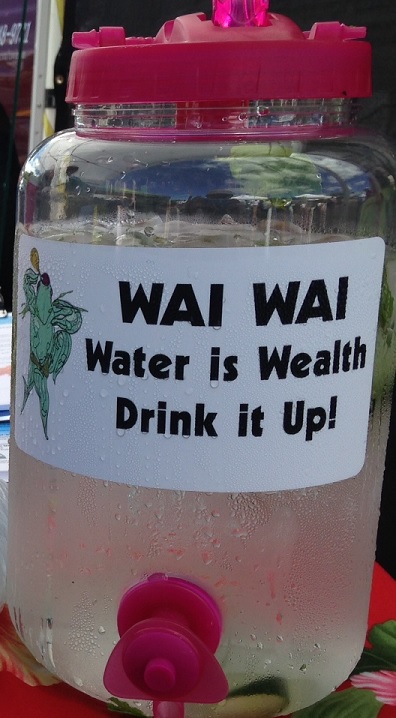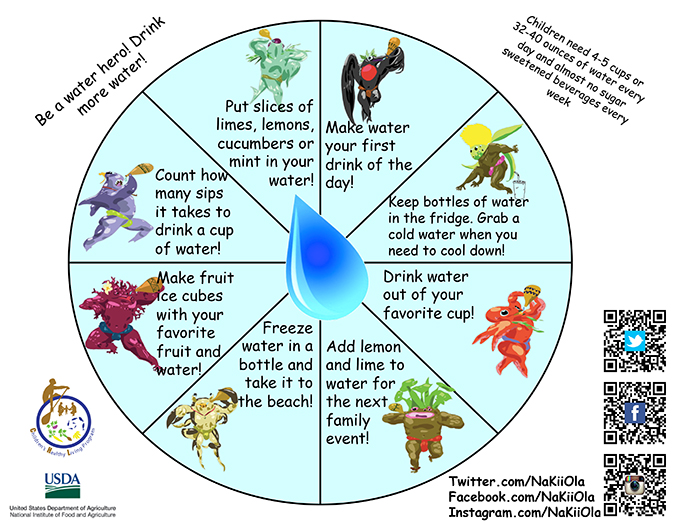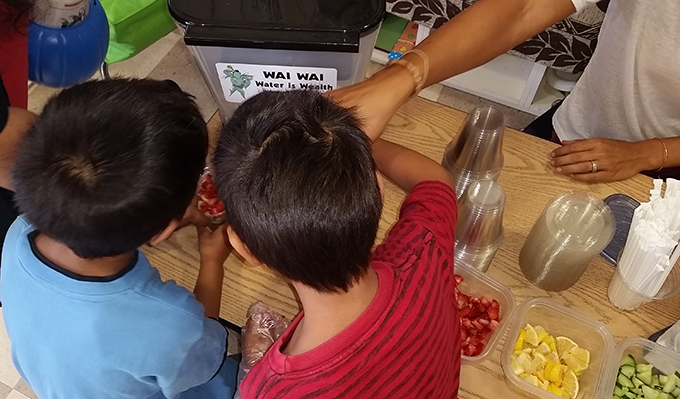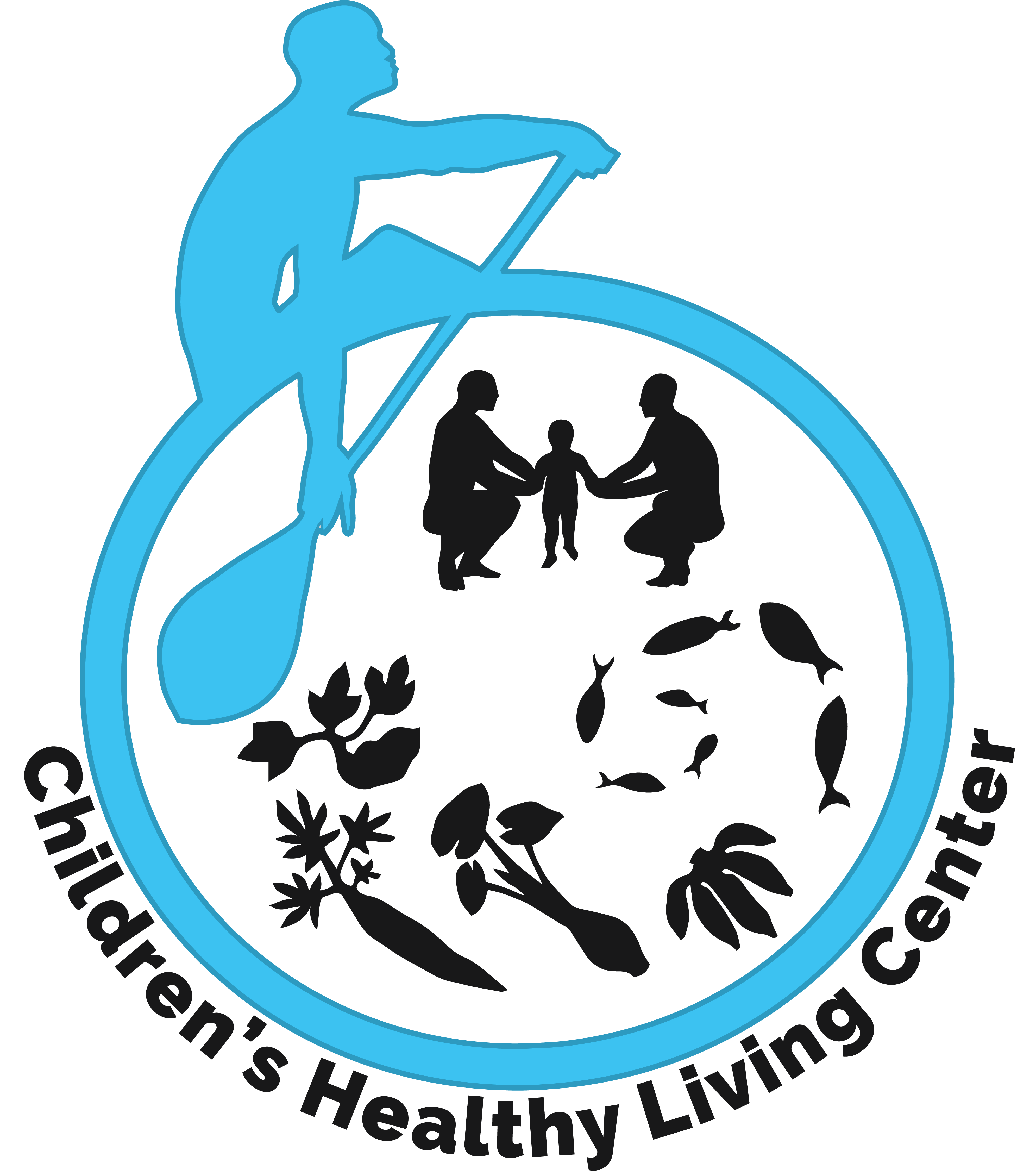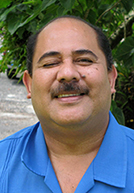
In this issue of the CHL Newsbrief we are focusing on what has been working in our CHL communities across the Pacific region. Partnership is an important pillar that has been working throughout the CHL jurisdictions in terms of program planning, implementation, delivery, funding, and sustainability. Moreover, the use of Role Models, prayers, cultural protocols, village weight loss competitions, sandwich boards, banners, flyers, text messages, and labels have been effective in promoting the CHL healthy lifestyle behaviors. Other highlights from our CHL region include promotion of water consumption, completion of data collection and entry, and a trainee graduating with a Masters in Public Health (MPH).
The success stories and accomplishments from CHL jurisdictions are like Pacific flowers with unique fragrances, strung together to make a garland known as ‘ula (American Samoa) or lei (Hawai‘i) that symbolizes beauty, unity, success and achievements. Therefore, CHL leadership, professional and support staff at all CHL jurisdictions, and our valuable partners – agencies, community leaders, role models, volunteers, teachers, parents, and especially the research participants – are commended for all the CHL successes this quarter.
Fa’afetai tele lava,
Aufa’i Apulu Ropeti Areta
Associate Director/CHL Lead Co-PI
Community & Natural Resources (CNR) Division
American Samoa Community College
From the CHL Education Program
Checking in on former CHL Trainee, Ashley Morisako

In July, I began the ʻImi Hoʻōla Post-Baccalaureate Program, an academically intensive one-year program with the goal of creating diversity in the health care workforce by providing opportunities to students from disadvantaged backgrounds and/or underrepresented populations to succeed in the health professions. As a student of this program, I have the opportunity to attend the John A. Burns School of Medicine (JABSOM) with conditional acceptance upon completing the program.
Future Goals
I envision myself in the future serving as a Native Hawaiian physician who addresses health disparities of Native Hawaiians, the homeless, and other underserved communities by acknowledging the current gaps in healthcare by providing multiple treatment approaches. The experiences, opportunities, and training I have gained from CHL has helped me to understand different approaches to health promotion and disease prevention through community engagement for implementing and sustaining healthy lifestyles. I am extremely committed to working in Hawaiʻi with Native Hawaiians and Pacific Islanders because I connect with them through my adversities and triumphs over childhood obesity and the common ground of calling Hawaiʻi home. I also hope to continue working in community outreach and advocacy for childhood obesity prevention by establishing rapport and cultivating stronger bonds with the communities I serve. My experiences with CHL have solidified my career goals, and I aspire to be a prominent community leader to advocate for the reduction of health disparities like childhood obesity and work with underprivileged populations. I would be honored to become a primary care physician working in medically underserved areas.
Ashley is a CHL Hawaii Trainee who graduated in May 2014 with an MPH specializing in Native Hawaiian and Indigenous Health. She is the first of many CHL-supported students who will graduate with a higher degree related to the CHL focus areas.
Alaska
CHL Team Alaska
As our daylight hours disappear in Alaska (we’re down to 7 per day) and temperatures continue to drop, the CHL Alaska team has had the opportunity to reflect on “what’s working.” On the top of our list is our partnership with organizations including the Early Childhood Development Commission, SNAP-Ed , and Head Start, to name a few, all of whom have brought enthusiasm, creativity, and meaning to the CHL program. Together, we’ve been able to deliver programs to children, parents, and providers. We’ve recently completed our Foodies at the Foodbank series that promoted both intake of local produce and cooking together as a family. Children and parents learned to prepare dishes such as cabbage rolls, Moroccan carrots, and kale smoothies. We enrolled over 100 families into our Text4happykids program that sends text messages to families about ways to increase fruit and vegetable intake. To encourage activity, we’ve distributed over 1400 summer and winter scavenger hunts to organizations across our site. We also distributed 400 winter gear items—from snow shoes to snow pants to ice skates—to families at the Best Beginnings Family Health Fair. It is our hope that these partnerships and programs will be sustained.
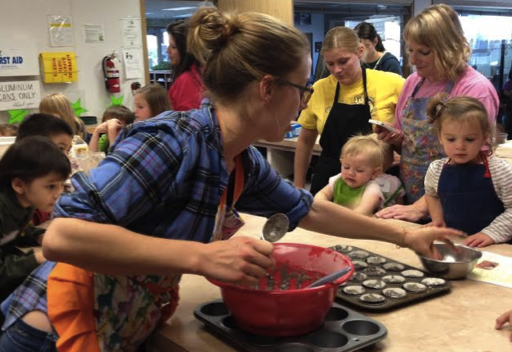
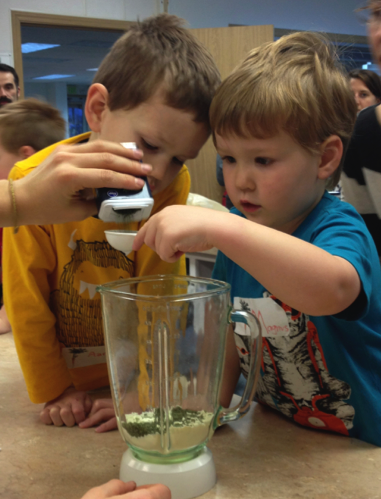
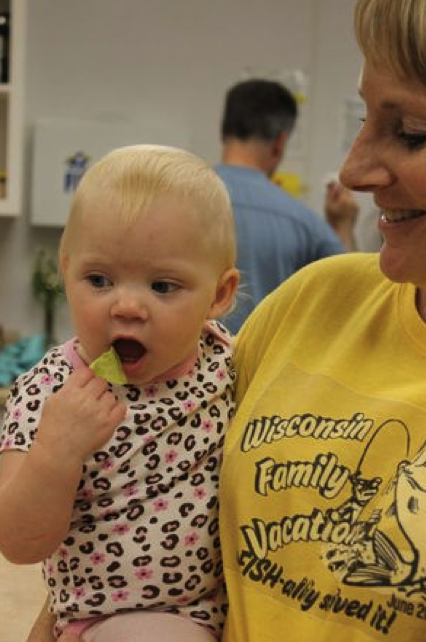
American Samoa
CHL Team American Samoa
What works in American Samoa is Prayer and Partnerships!
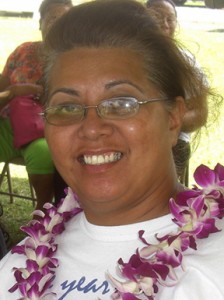
“Sing praise, play music, proclaim all His wondrous deeds! Glory in His Holy name.” (Psalm 105:2) Prayer and reliance on God’s love and mercy is very important in Samoan Culture, so it is imperative that at the beginning and end of every major event or undertaking, the blessing of the Almighty is evoked. In our first photo, Community Partners from the Holy Family Cathedral, Fr. Kelemete Pua’auli, “Family Alliance against Sexual and Domestic Violence,” Executive Director, Ms. Fa’aalu Faletoese Uli; Hope House, Home for the Aged and Disabled, Director (Sister Faustina Stowers and resident, Mary) and Department of Human and Social Services, Director of the Family Behavior program, (Ms. Florence Ainuu), gathered with CHL representative for the opening celebration of the Eucharistic Service of the CHL-initiated, “Campaign Non-Violence Week (CNV)” in American Samoa (September 21-27). Issues of traditional Samoan non-violence methods (which included the practice of non-violence toward oneself by adopting CHL inspired Healthy Behaviors), poverty, climate crisis, the gun situation and family health were highlighted through several events: a CNV Symposium at the American Samoa Community College (ASCC), a Church rally, and a Conflict resolution workshop at the Territorial Office for the Aging at Lion’s Park. At these events, the CHL message sandwich boards, and the detailed flyers explaining the advantages of observing Childhood Healthy Behaviors were displayed and handed out along with verbal presentations. In the second photo is Mrs. Mona Uli, a volunteer at the Family Alliance, who helped us co-coordinate all these events. Mona also produced a 3-minute video and website to document the American Samoa CNV and is continuing the “Step Up” or “La’a Loa” movement, which resulted from the Campaign Non-Violence Symposium. She also started a 4-H club for her village. In addition, she has been inspired by the CHL project to start a home garden, adopt a personal exercise program with the help of the ASCC-CNR-Wellness Center, and try healthy cooking recipes with “Lau Pele”, a nutritious native Samoan hibiscus for her church, 4-H Youth group and her own family. Thank you, Mona for your outstanding efforts!
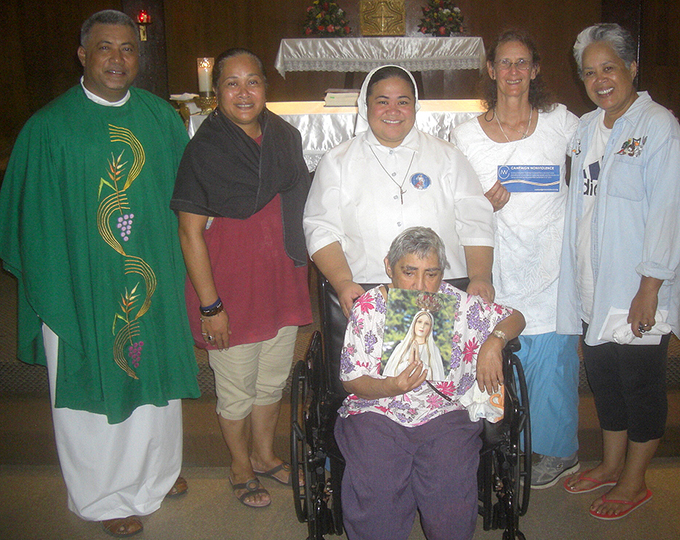
In conclusion, with heart-felt thanks, we humbly offer a grateful “fa’afetai tele lava” to our Almighty Creator. Likewise, to the CHL Program in Hawaii and elsewhere in the Pacific for their huge alofa (love), inspiration and well wishes. May God be with you always with abundant blessings, Peace, Joy and all that is good and holy! “PACE E BENE”. (Thank you so much, Ryan Hall at National CNV, for including American Samoa in the National CNV website).
Commonwealth of the Northern Mariana Islands
CHL Team Commonwealth of the Northern Mariana Islands
Relationships with Role Models, works!
In 2011, the Children’s Healthy Living (CHL) Program conducted community meetings to get further insight into issues and solutions of relevance to community members. During these important community meetings, community champions were identified. CHL staff were able to foster and nurture the newly established relationships with the champions through engaging them in working to identify solutions that are relevant to their communities. Fast forward to 2014, all of the intervention programs that have been initiated and/or implemented have been done through the leadership and partnership of our role models.
Both TASA and Kagman CHL Role Models work collaboratively to prioritize all the activities they feel are important in creating positive changes in their villages. CHL Staff then assists with providing support through trainings, supplies for environmental enhancements, and engaging other organizations to collaborate with the role models. In doing so, this empowers them to continue moving FULL SPEED AHEAD in promoting and creating healthier communities. Their commitment in creating change within their respective communities is admirable.
The role models felt it was important to work with the “Mom and Pop” stores in their villages because a majority of the residents shop there. This prompted the “Healthy Village Store Initiative”. Role models worked collaboratively with NMC External Relations Office to design a “tool kit” that would facilitate discussions with storeowners. One of the selected activities was conducting in-store cooking demonstrations. CHL team coordinated efforts with the Bureau of Environment Health (BEH) to provide Food Safety training for the role models. This training equipped our role models with the skills to conduct cooking demonstrations on their own without having to depend on CHL or EFNEP staff.
Our CHL team values the relationship with our role models. We will continue to diligently strengthen our relationship with them and empower them to lead changes that are conducive to healthier living. In the CNMI, relationships are very important. AND we know it is the key ingredient in getting the work done and sustaining efforts.
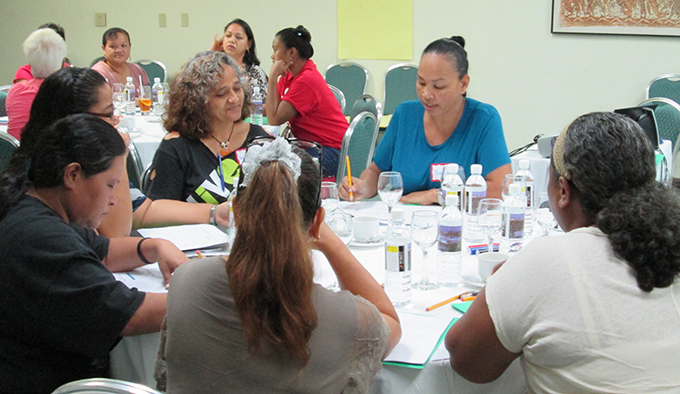
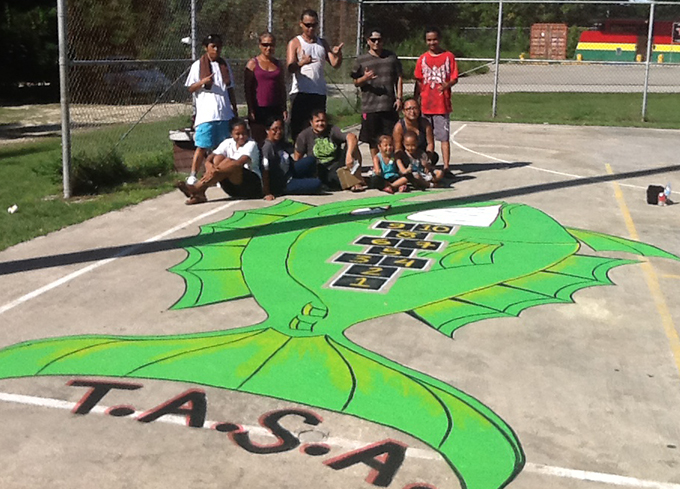
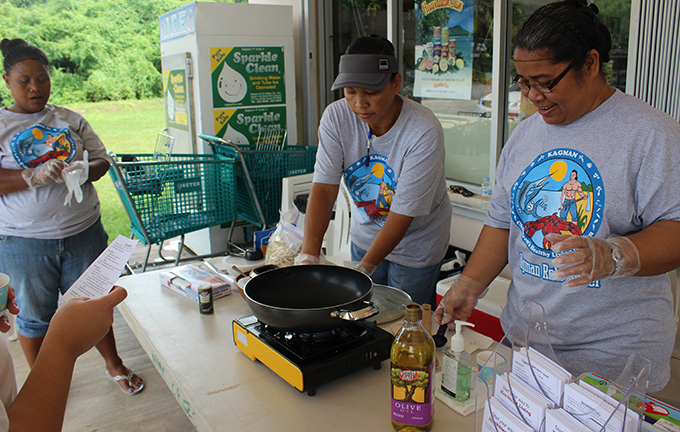
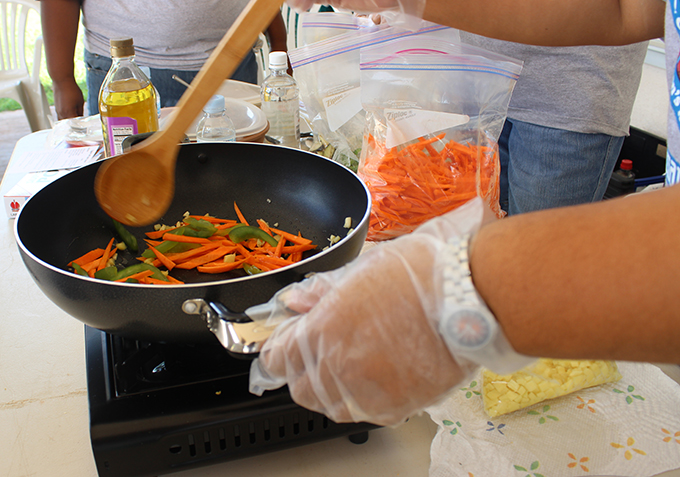
Freely Associated States of Micronesia
CHL Team Freely Associated States
Since our last report, the FAS prevalence survey has concluded data collection in Yap, FSM. Team members travelled to both Yap proper and Ulithi atoll in September 2014, where over 200 children were recruited and anthropometrically measured. Data entry of “Other Forms” has since begun for Yap. This work would not have been completed without the assistance of the local Yap staff as well as the YINEC Corporation, who served as the financial partner for CHL in Yap.
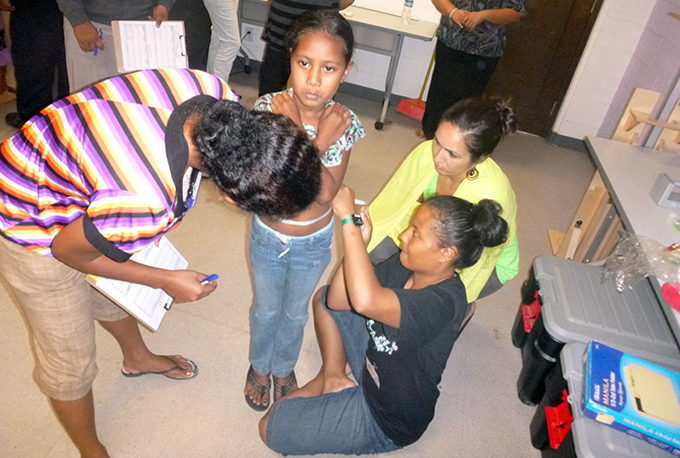
Pohnpei, RMI and Palau, who have concluded Other Forms data entry, are continuing with Food and Activity Log (FAL) Data Entry. The Nutrition Support Shared Resource at the Cancer Center has since received a first batch of FALs from each of these jurisdictions.
CAT forms have also been completed for Pohnpei, RMI, Palau and Yap proper. Data entry is in progress for these as well.

In other great news, the Kosrae prevalence survey is slated to take place in January 2015. The CHL FAS team welcomes Ms. Cecilia Sigrah, Kosrae CHL Outreach Education Assistant to the CHL Ohana. Cecilia brings a wealth of experience to the FAS team as she has been employed by the Kosrae Department of Health Services for over a decade.
Guam
CHL Team Guam
The University of Guam’s Children’s Healthy Living (CHL) Program in partnership with the Yigo, Yona, and Talofofo Mayors’, Guam Department of Public Health and Social Services’ Non Communicable Disease Consortium (NCD), Calvo’s Select Care, and TakeCare Insurance Co. Inc. are conducting a pilot project, the “Healthy Village Weight Initiative” in the villages of Yigo, Yona, and Talofofo. The competition will reduce obesity and promote chronic disease prevention by increasing the following: consumption of fruits and vegetables, physical activity, water consumption, and sleep. Through a village-to-village competition, we hope to engage the community members in weekly cohort trainings on diet, physical activity and healthy lifestyles. We and our partners will provide weekly trainings to each village cohort, in their village. Trainings will be on different diet topics and physical activity programs with samples of healthy foods. Our goal is to build a team in each village that works together to promote and model healthy lifestyle behaviors.
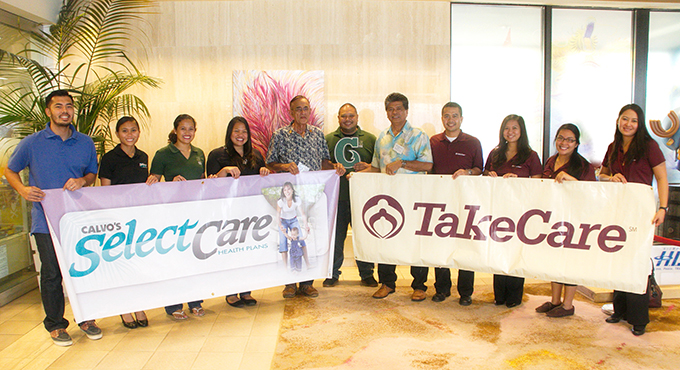
J Saldana, Christine Ubaldo (Select Care), Alicia Borja, Remylynn Yamanaka (UOG-CHL), Vicente S. Taitague (Talofofo Mayor), Mark Acosta (UOG-CHL), Rudy M. Matanane (Yigo Mayor), Clarence Palisoc, Michelle Alfonso, Myg Cordero, and Donnabelle Little (Take Care). Not Shown: Ken Joe Ada (Yona Mayor).
All three (3) villages are competing with each other for the greatest total percent weight loss. 1st place village prize will be $1,000, 2nd place $500, and 3rd place $250. Based on current sponsorship level, each village will have a 1st place winner receiving $300, a second place winner receiving $150, and a 3rd place winner receiving $75. But unlike traditional “Biggest Loser Competitions”, we will incorporate incentives into the program so that everyone is a winner. Incentives will be provided to individuals and villages at certain milestones. Gift certificates, water, plants, and other noncash incentives we will be awarded through raffle drawings at each week’s training. In addition to the weekly training/education sessions for participating adults in each village, childcare in the form of ‘wellness education’ will be provided for participants’ children at the same time.
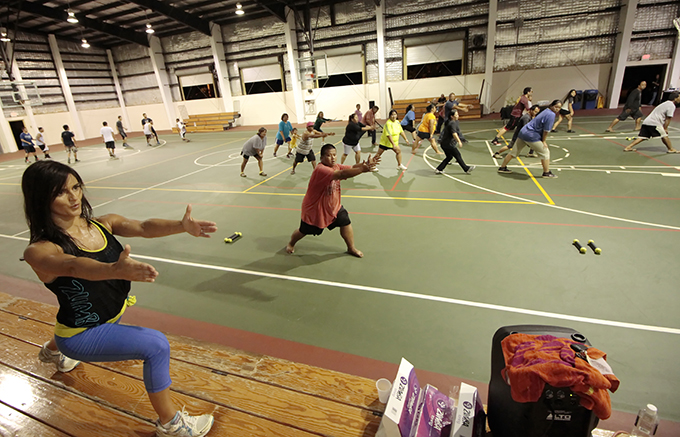
Hawai‘i
CHL Team Hawai‘i
Wai – the Hawaiian word for water
Wai Wai – Hawaiian for wealth
Clean fresh water (wai) is valuable (wai wai) to Hawaii and the Hawaiians. The CHL Hawaii team has been highlighting water in our community activities.
- We have had water tastings at Head Start classrooms, where the students taste two different infused waters and put a sticker on the ones they like best.
- We use clear water containers, so students can see the water, fruit, and ice.
- At the Waianae Farmer’s Market we have had keiki make their own cup of fruit and veggie-infused water.
- The keiki also can make a “spinner” game that promotes water consumption. They can take this home and mount it on the refrigerator (see image below).
- Beverage dispensers with labels saying “Wai Wai Water is Wealth, Drink It Up!” have been given to community partners to support their pledge to serve water at community events.
- The team continues to set up community hikes in the Wai‘anae mountains as a means to teach about the watershed and how to tend it.
- We also are promoting a Hawaiian chant that aims to connect people back to the land, culture, water, and health – “Aia I he aka Wai a Kāne?” which means “where is the water of Kane?”
Our partners have secured funding for water bottle filling stations to be placed at Nanakuli High and Intermediate School and purchased 600 water bottles with the “Wai Wai Water is Wealth, Drink it Up!” printed on the bottles. They are looking to fund water bottle filling stations at all the Nanakuli schools!
To further water promotion, the CHL team along with community partners are working with Nanakuli High and Intermediate school students to look at where the water comes from, where it goes, the importance of Hawaii’s watersheds, and how water benefits the health of people and plants.
Here’s to water! Here’s to health! Cheers!
